Growing Eggplant in Containers: Imagine plucking a plump, glossy eggplant straight from your patio, ready to be transformed into a delicious baba ghanoush or a hearty eggplant parmesan. Sounds dreamy, right? Well, it doesn’t have to be just a dream! For centuries, gardeners have cultivated eggplants, tracing their origins back to ancient India where they were prized for both their ornamental beauty and culinary uses. Today, you don’t need acres of land to enjoy the taste of homegrown eggplant.
Whether you’re short on space, dealing with poor soil, or simply want the convenience of having fresh produce steps from your kitchen, growing eggplant in containers is the perfect solution. I know, I know, it might seem intimidating, but trust me, with a few simple tricks and DIY hacks, you can successfully cultivate these beautiful and bountiful plants in pots. This article will guide you through everything you need to know, from choosing the right container and soil to providing the proper sunlight and nutrients.
Why is this DIY trick so essential? Because everyone deserves access to fresh, healthy food, and container gardening makes it accessible to all! Plus, there’s nothing quite as satisfying as nurturing a plant from seedling to harvest. So, grab your gardening gloves, and let’s get started on your eggplant adventure!
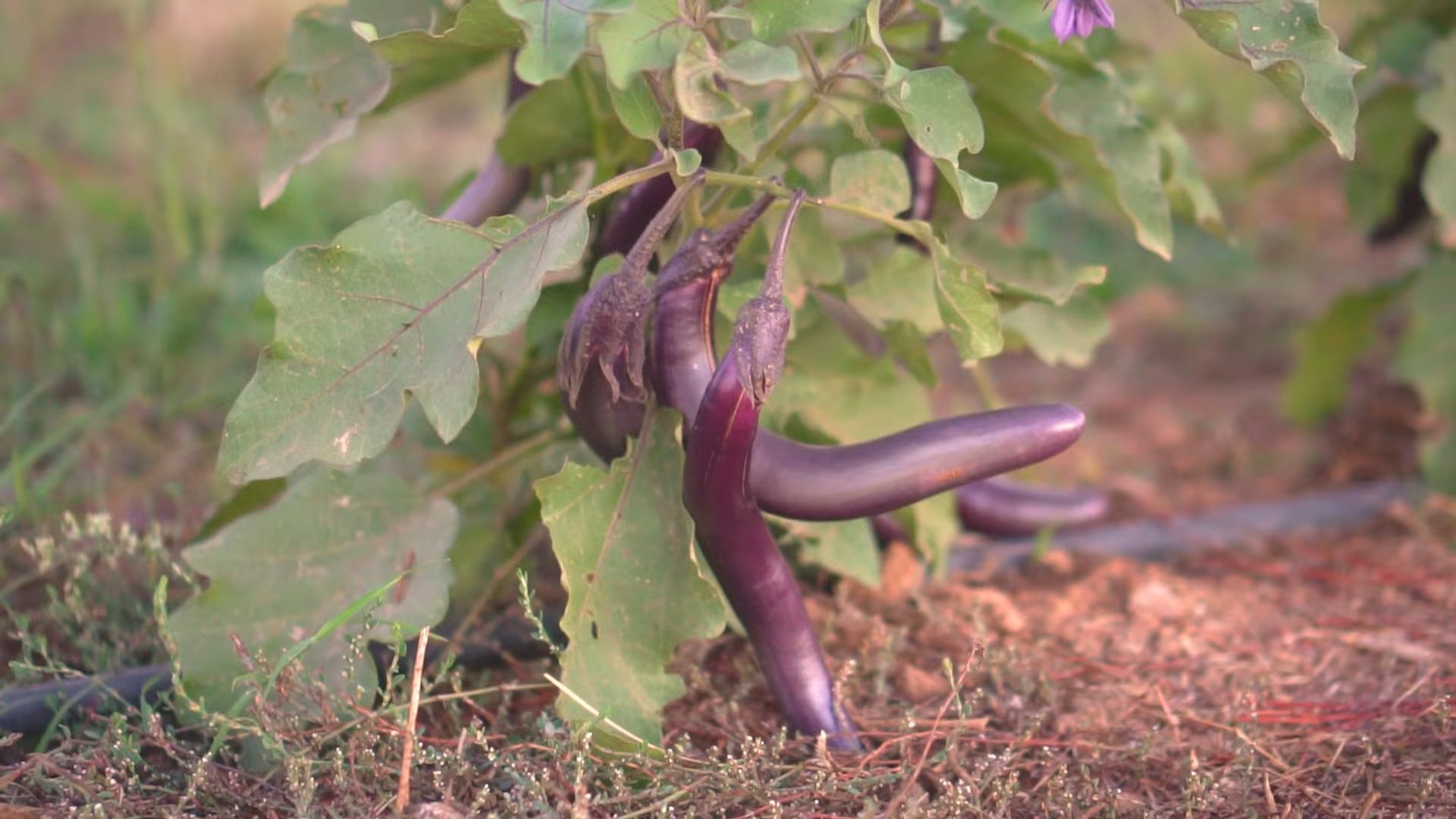
Growing Eggplant in Containers: A Complete DIY Guide
Hey there, fellow gardening enthusiasts! I’m so excited to share my tried-and-true method for growing beautiful, bountiful eggplants right in containers. Forget thinking you need a huge garden – with a little know-how, you can enjoy fresh, homegrown eggplant even on a small balcony or patio. Let’s dive in!
Choosing the Right Eggplant Variety
Before we even think about soil, let’s talk eggplant varieties. Not all eggplants are created equal, especially when it comes to container gardening. You’ll want to choose compact or dwarf varieties that are well-suited for smaller spaces. Here are a few of my favorites:
* ‘Patio Baby’: This one is a superstar! It produces tons of small, delicious eggplants on a compact plant. Perfect for beginners.
* ‘Hansel’: These adorable, finger-sized eggplants are not only tasty but also incredibly productive.
* ‘Fairy Tale’: Another great choice for containers, ‘Fairy Tale’ eggplants are beautiful, striped, and have a mild flavor.
* ‘Little Fingers’: As the name suggests, these are small and slender, ideal for grilling or stir-fries.
* ‘Ichiban’: While slightly larger than the others, ‘Ichiban’ can still thrive in a container if you provide adequate support.
Gathering Your Supplies
Okay, now that we’ve picked our eggplant variety, let’s gather everything we need. Trust me, having everything on hand before you start makes the whole process much smoother.
* Container: This is crucial! Choose a container that’s at least 14-16 inches in diameter and depth. Eggplants need plenty of room for their roots to grow. Fabric pots are also a great option as they allow for better drainage and aeration.
* Potting Mix: Don’t skimp on the potting mix! Use a high-quality, well-draining potting mix specifically formulated for containers. Avoid using garden soil, as it can become compacted and doesn’t drain well in pots.
* Eggplant Seedlings: You can start your eggplants from seed, but I usually prefer to buy seedlings from a local nursery. It saves time and effort, and you’re more likely to have success.
* Fertilizer: Eggplants are heavy feeders, so you’ll need a good fertilizer. I recommend a balanced, slow-release fertilizer or a liquid fertilizer specifically formulated for vegetables.
* Watering Can or Hose: Essential for keeping your eggplants hydrated.
* Gardening Gloves: Protect your hands!
* Stakes or Cages: Depending on the variety, your eggplant may need support as it grows. Stakes or cages will help prevent the plant from toppling over.
* Mulch: Mulch helps retain moisture in the soil and suppress weeds. Straw, wood chips, or even dried leaves work well.
* Hand Trowel: For planting and transplanting.
Step-by-Step Planting Guide
Alright, let’s get our hands dirty! Here’s how to plant your eggplant seedlings in containers:
1. Prepare the Container: Make sure your container has drainage holes. If not, drill some! Then, fill the container with potting mix, leaving about an inch or two of space at the top.
2. Remove the Seedling from its Container: Gently squeeze the sides of the seedling’s container to loosen the roots. Carefully remove the seedling, being careful not to damage the roots.
3. Loosen the Root Ball: Gently tease apart the roots of the seedling. This will encourage them to spread out and establish themselves in the new container.
4. Dig a Hole: Dig a hole in the potting mix that’s large enough to accommodate the seedling’s root ball.
5. Plant the Seedling: Place the seedling in the hole, making sure the top of the root ball is level with the surface of the potting mix.
6. Fill in the Hole: Gently fill in the hole with potting mix, pressing down lightly to secure the seedling.
7. Water Thoroughly: Water the seedling thoroughly until water drains out of the drainage holes. This will help settle the soil and hydrate the roots.
8. Add Mulch: Apply a layer of mulch around the base of the plant to help retain moisture and suppress weeds.
9. Stake or Cage (if needed): If your eggplant variety is prone to toppling over, insert a stake or cage into the container near the plant. Gently tie the plant to the stake or cage as it grows.
Caring for Your Container Eggplants
Now that your eggplants are planted, it’s time to provide them with the care they need to thrive.
1. Watering: Eggplants need consistent moisture, especially when they’re actively growing and fruiting. Water deeply whenever the top inch of soil feels dry to the touch. Avoid overwatering, as this can lead to root rot. I usually water every day or two, depending on the weather.
2. Fertilizing: As I mentioned earlier, eggplants are heavy feeders. Fertilize them every two to three weeks with a balanced, slow-release fertilizer or a liquid fertilizer specifically formulated for vegetables. Follow the instructions on the fertilizer package.
3. Sunlight: Eggplants need at least 6-8 hours of sunlight per day to produce a good crop. Place your containers in a sunny location where they’ll receive plenty of direct sunlight.
4. Pruning: Pruning can help improve air circulation and encourage fruit production. Remove any yellowing or dead leaves. You can also pinch off suckers (small shoots that grow from the base of the plant) to encourage the plant to focus its energy on producing fruit.
5. Pest Control: Keep an eye out for pests like aphids, flea beetles, and spider mites. If you notice any pests, treat them promptly with an insecticidal soap or neem oil. I prefer to use organic pest control methods whenever possible.
6. Pollination: Eggplants are self-pollinating, but sometimes they need a little help. You can gently shake the plant or use a small paintbrush to transfer pollen from one flower to another. This is especially important if you’re growing your eggplants indoors or in a sheltered location where pollinators may not be as active.
Harvesting Your Eggplants
The moment we’ve all been waiting for! Harvesting your homegrown eggplants is incredibly rewarding.
1. Timing is Key: Harvest your eggplants when they’re firm, glossy, and have reached their mature size. The skin should be smooth and unblemished. Overripe eggplants will become dull, soft, and bitter.
2. Use a Sharp Knife or Pruning Shears: Cut the eggplant from the plant, leaving about an inch of stem attached.
3. Handle with Care: Eggplants are delicate and can bruise easily, so handle them with care.
4. Store Properly: Store your harvested eggplants in the refrigerator for up to a week.
Troubleshooting Common Problems
Even with the best care, you might encounter some problems along the way. Here are a few common issues and how to address them:
* Blossom End Rot: This is a common problem that causes the bottom of the eggplant to rot. It’s usually caused by calcium deficiency or inconsistent watering. To prevent blossom end rot, make sure your soil is rich in calcium and water your eggplants consistently. You can also add a calcium supplement to the soil.
* Yellowing Leaves: Yellowing leaves can be a sign of nutrient deficiency, overwatering, or pest infestation. Check the soil moisture and nutrient levels, and inspect the plant for pests.
* Lack of Fruit Production: If your eggplant isn’t producing fruit, it could be due to lack of sunlight, poor pollination, or nutrient deficiency. Make sure your plant is getting enough sunlight, hand-pollinate the flowers if necessary, and fertilize regularly.
* Pest Infestations: As mentioned earlier, eggplants can be susceptible to pests like aphids, flea beetles, and spider mites. Treat infestations promptly with an insecticidal soap or neem oil.
Extra Tips for Success
Here are a few extra tips that I’ve learned over the years that can help you grow even better eggplants in containers:
* Rotate Your Crops: Avoid planting eggplants in the same container year after year. Rotating your crops can help prevent soilborne diseases and pests.
* Use Companion Planting: Plant companion plants like basil, marigolds, and thyme near your eggplants to help repel pests and attract beneficial insects.
* Provide Support: Even if your eggplant variety isn’t particularly tall, it’s still a good idea to provide some support. This will help prevent the plant from toppling over, especially when it’s loaded with fruit.
* Don’t Be Afraid to Experiment: Gardening is all about experimentation! Don’t
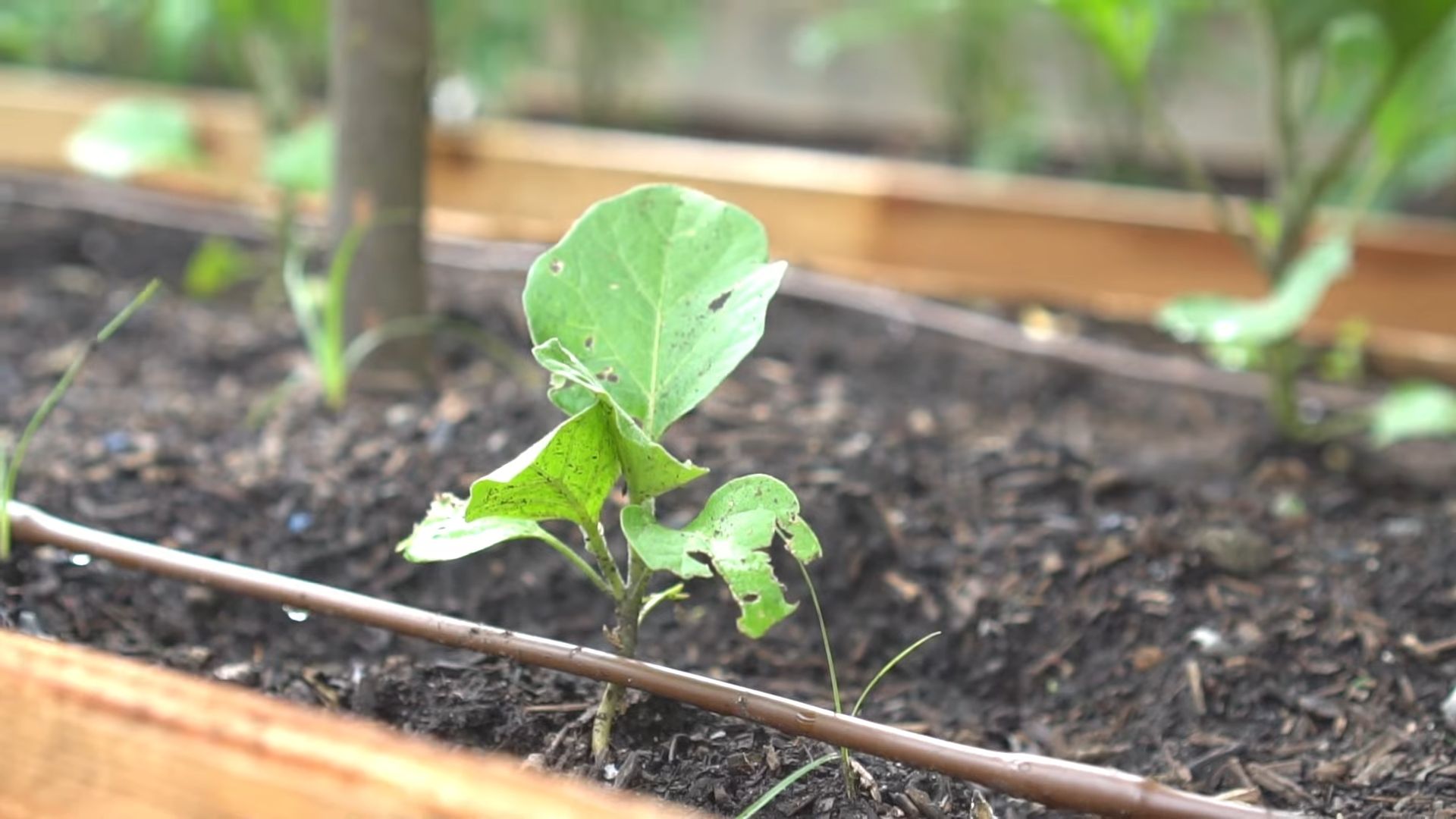
Conclusion
So, there you have it! Growing eggplant in containers isn’t just a possibility; it’s a pathway to fresh, delicious, and homegrown produce right at your fingertips, even if you’re short on space. We’ve covered everything from selecting the right container and choosing the perfect eggplant variety to providing optimal sunlight, watering, and fertilization. The beauty of this method lies in its accessibility and adaptability. Whether you have a sprawling backyard or a small balcony, you can successfully cultivate these beautiful, glossy vegetables.
But why is this DIY trick a must-try? Because it empowers you to take control of your food source. You know exactly what goes into your eggplant – no harmful pesticides, no questionable growing practices. Plus, there’s an unparalleled satisfaction in harvesting something you’ve nurtured from a tiny seedling. The taste of a homegrown eggplant, bursting with flavor and freshness, is simply unmatched by anything you can buy in a store.
Beyond the basic guidelines, there’s plenty of room for experimentation. Consider trying different eggplant varieties to discover your personal favorite. Perhaps you’ll fall in love with the slender, mild-flavored Japanese eggplant, or maybe the classic globe eggplant will become your go-to. You can also explore companion planting by adding herbs like basil or thyme to your container, which can help deter pests and enhance the flavor of your eggplant. Another variation is to experiment with different types of organic fertilizers to see which yields the best results for your specific growing conditions. Don’t be afraid to get creative and tailor the process to your own preferences and environment.
Growing eggplant in containers is more than just a gardening project; it’s an experience. It’s a chance to connect with nature, learn new skills, and enjoy the fruits (or vegetables!) of your labor. It’s also a sustainable way to reduce your carbon footprint and contribute to a healthier planet.
We wholeheartedly encourage you to give this DIY trick a try. Start small, be patient, and don’t be discouraged by initial setbacks. Gardening is a learning process, and every mistake is an opportunity to grow (pun intended!). Once you’ve harvested your first eggplant, we’re confident you’ll be hooked.
And most importantly, we want to hear about your experience! Share your photos, tips, and challenges in the comments below. Let’s build a community of container eggplant growers and learn from each other. What varieties did you try? What challenges did you face? What successes did you celebrate? Your insights can help other aspiring gardeners embark on their own eggplant-growing journey. So, grab your containers, seeds, and gardening gloves, and let’s get growing!
Frequently Asked Questions (FAQ)
Q: What is the best size container for growing eggplant?
A: Ideally, you should use a container that is at least 5 gallons in size, but a 10-gallon container is even better. Eggplants need plenty of room for their roots to grow and develop. A larger container will also help retain moisture and prevent the plant from becoming root-bound. The bigger the container, the happier your eggplant will be!
Q: What type of soil should I use for container eggplant?
A: Use a high-quality potting mix that is well-draining and rich in organic matter. Avoid using garden soil, as it can become compacted in containers and hinder drainage. Look for a potting mix that contains ingredients like peat moss, perlite, and vermiculite. You can also amend your potting mix with compost or aged manure to provide additional nutrients.
Q: How much sunlight do eggplants need?
A: Eggplants need at least 6-8 hours of direct sunlight per day to thrive. Choose a location for your container that receives plenty of sunlight throughout the day. If you live in a particularly hot climate, you may need to provide some afternoon shade to prevent the plants from overheating.
Q: How often should I water my container eggplant?
A: Water your eggplant regularly, especially during hot and dry weather. The soil should be kept consistently moist, but not waterlogged. Check the soil moisture level by sticking your finger into the soil. If the top inch feels dry, it’s time to water. Be sure to water deeply, allowing the water to drain out of the bottom of the container.
Q: What kind of fertilizer should I use for eggplant?
A: Eggplants are heavy feeders and require regular fertilization. Use a balanced fertilizer with an NPK ratio of 10-10-10 or 14-14-14. You can also use an organic fertilizer, such as compost tea or fish emulsion. Fertilize your eggplant every 2-3 weeks during the growing season.
Q: How do I prevent pests and diseases from affecting my eggplant?
A: Regularly inspect your eggplant for pests and diseases. Common pests include aphids, flea beetles, and spider mites. You can control these pests with insecticidal soap or neem oil. To prevent diseases, ensure good air circulation around the plant and avoid overwatering. You can also use a fungicide if necessary. Companion planting with herbs like basil can also help deter pests.
Q: When can I harvest my eggplant?
A: Eggplants are typically ready to harvest 65-80 days after transplanting. The fruit should be firm, glossy, and have a deep, rich color. Gently press the skin of the eggplant. If it springs back, it’s ready to harvest. Use a sharp knife or pruning shears to cut the eggplant from the plant, leaving a small stem attached.
Q: Can I grow eggplant indoors?
A: While it’s possible to grow eggplant indoors, it can be challenging. Eggplants require a lot of sunlight, so you’ll need to provide supplemental lighting with grow lights. You’ll also need to ensure good air circulation and pollination. It’s generally easier to grow eggplant outdoors in containers.
Q: My eggplant flowers are falling off without producing fruit. What’s happening?
A: This is a common problem called blossom drop. It can be caused by several factors, including temperature stress (too hot or too cold), lack of pollination, or nutrient deficiencies. Ensure your eggplant is getting enough sunlight and water, and fertilize it regularly. You can also try hand-pollinating the flowers by gently shaking the plant or using a small brush to transfer pollen from one flower to another.
Q: Can I save seeds from my homegrown eggplant?
A: Yes, you can save seeds from your homegrown eggplant, but keep in mind that if you grew a hybrid variety, the seeds may not produce plants that are true to type. To save seeds, allow the eggplant to fully mature on the plant until it becomes overripe and the skin turns brown. Scoop out the seeds and rinse them thoroughly. Spread the seeds out on a paper towel to dry completely before storing them in an airtight container in a cool, dark place.


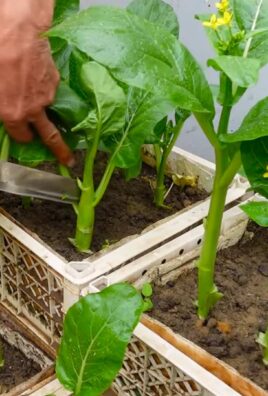
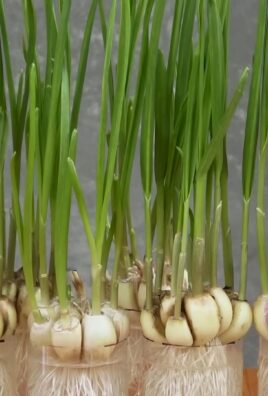
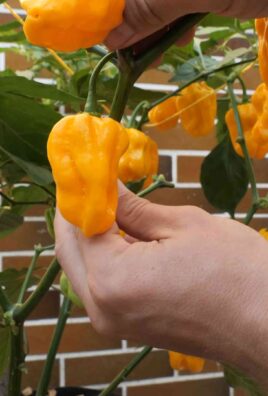
Leave a Comment